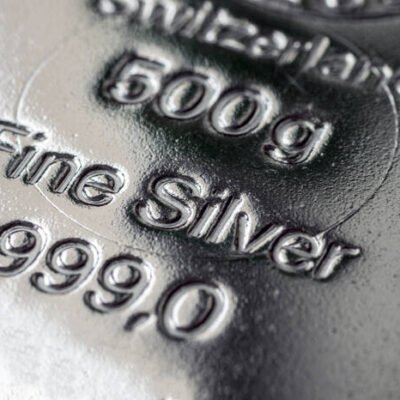Other peaks in the ratio, such as in March 2023 at 91.06, also initiated a strong price surge in both metals. Moreover, the peak in February 2024 at 91.76 again led to a strong surge in both metals.
Recently, silver has once again produced a bottom at the short-term support level of $26.80 in spot market, but the gold market has not yet produced a lower price during this bottoming process. However, the ratio is currently hitting the resistance line originating from September 2022, and it is attempting to break through this resistance.
It appears that the ratio is at a key level, and a breakout from this resistance would indicate that the correction in both metals is still not over, potentially leading to further price fluctuations. However, if the ratio holds at this resistance and starts to correct lower, it would suggest that gold and silver have bottomed and will increase in value. This scenario would also indicate that silver will move faster than gold, leading to a further drop in the ratio.
Next Move in Gold & Silver
Gold’s performance in recent months has been strong, with the LBMA gold price averaging an unprecedented US$2,338/oz in Q2 2024. This marks a significant increase of 18% compared to Q2 2023 and a 13% increase from Q1 2024. This price surge was notably driven by substantial over-the-counter (OTC) investment, contributing 329 tonnes to the total gold demand. Additionally, central banks continued accumulating gold, supporting the price rally that saw gold hit a new record high.
On the supply side, gold production grew by 4% year-over-year, with mine output reaching a record for Q2 2024, while recycling activities also increased, reflecting the incentive provided by rising gold prices. Despite divergent investment trends across regions—strong in the East and weaker in the West—the recovery in Western ETF flows suggests a potential market rebalancing.
On the other hand, silver is also experiencing a notable increase in demand, mainly driven by its critical role in industrial applications. The global demand for silver is expected to reach approximately 1.2 billion ounces in 2024, fueled by growth in traditional sectors such as jewellery and silverware and modern industrial uses. Silver’s unique properties, including its high electrical and thermal conductivity, make it indispensable in various high-tech and green technologies.
The ongoing expansion of the solar photovoltaic (PV) sector, especially in China, is a significant factor driving silver demand as countries worldwide intensify their efforts to reduce carbon emissions and transition to renewable energy sources. The recent global commitment to lower carbon footprints, solidified during COP28, further emphasizes the importance of silver in future industrial growth, particularly in sectors aimed at achieving net-zero emissions.
From a technical standpoint, gold and Silver markets have recently broken through critical resistance levels, signalling a solid bullish outlook. Gold, having surpassed a long-term resistance level of US$2,075/oz, now sees a potential rise towards US$3,000/oz. Similarly, silver targets an increase to US$50/oz, supported by positive technical indicators and a rising gold-to-silver ratio.
This ratio is currently at a critical level. Both metals could catalyze a solid upward movement if resistance is encountered here. The alignment of technical factors with the ongoing supply and demand dynamics suggests that gold and silver prices will likely continue their upward trajectory soon, with the potential for significant gains as market conditions evolve.
In conclusion, the Gold to Silver Ratio remains a crucial tool for understanding the dynamics of the precious metals market, particularly during periods of economic uncertainty and market volatility. As gold and silver prices continue to be influenced by a complex interplay of supply, demand, and broader economic factors, the ratio’s behavior provides valuable insights into potential market movements.
With both metals showing strong bullish signals and the ratio currently at a critical juncture, investors should closely monitor these developments as they could signal significant opportunities for gains in the near future. Furthermore, the possibility of rate cuts by the Federal Reserve could further boost gold and silver prices, as lower interest rates typically enhance the appeal of these non-yielding assets. From a technical perspective, with gold targeting $3,000 and silver moving towards $50, the increase in the ratio suggests that both metals are set to surge higher.





